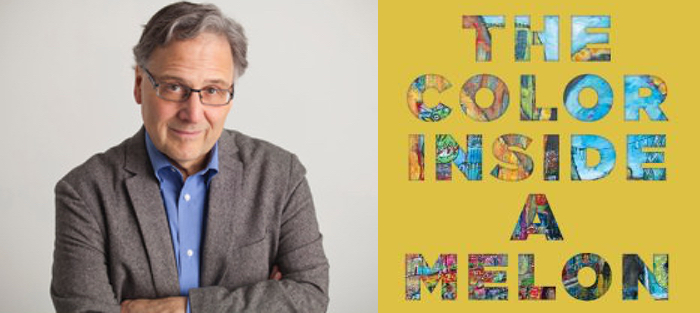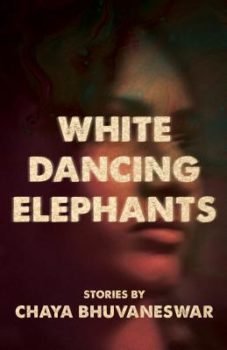John Domini’s The Color Inside a Melon (Dzanc Books) brings his Naples trilogy to an elegant close, with a novel both intellectual and noir. Domini’s written another thought provoking thriller set in post-earthquake Naples, where poverty and chaos prevail, and characters use whatever creative means they have, within and without the law, to survive and drag themselves to the surface of this cultural, physical, and financial mayhem.
The novel centers around Risto, an art gallery owner and renowned refugee “success story.” Scarred from the trauma of his past, he begins his own investigation of a murder of another African. Unable to turn away from his detective work, Risto comes face to face with more than just physical violence, but the violence of racial discrimination and the overall dehumanization of one group of people by another. A Domini character must not only survive, he is forced to decide what kind of person he will be, what kind of emotional scarring he’s able to live with, and what kind of impact he plans to have on those around him. Sharp, witty, and suspenseful, this novel is especially timely in our current political climate, not only in the states but across Europe as well.
Domini has written four novels and three books of short fiction, and has completed several translations. He’s been the recipient of an NEA Fellowship and the Iowa Major Artist Award. He lives in Des Moines, Iowa, although this interview was conducted via email while he was returning home from an extended stay in Naples. John and I first talked about this interview at AWP, where we catch up each year, share our writing successes and struggles, build our writing community, and drink martinis.
Interview:
Naomi Ulsted: The Color Inside a Melon explores issues of immigration, refugees, and the discrimination your characters face because of the color of their skin. Although the book is set in Naples, do you think this is a book you would have written before Trump came to office? How much of our current political climate affected the writing of this book?
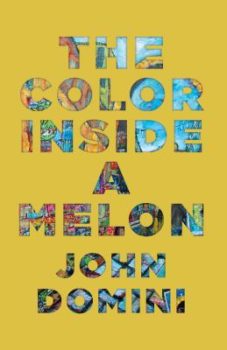 John Domini: These days, every writer suffers the DT’s. Alcohol abuse has nothing on our current Chief Executive, when it comes to making us reel. I’d hope that Color Inside a Melon proves one of the correctives, the hangover cures. I mean, aren’t the guts of my novel those of a Somali refugee, a Bannonite bogeyman? Isn’t my Risto one of the pestilent renegades supposedly overwhelming the values of the White Jesus? My novel, I’d hope, reveals the contrary: a person of subtlety and ferment. It imbues a whole constellation of outsiders with complex humanity, and dramatizes their contributions to the dominant culture. That’s my dream for The Color Inside, anyway, a dream fueled in part by witnessing the rise of similar vicious xenophobia across Europe. The Continent doesn’t get FOX propaganda, but it does have fear-mongering for profit. Italy’s current head of government is a knockoff of #45.
John Domini: These days, every writer suffers the DT’s. Alcohol abuse has nothing on our current Chief Executive, when it comes to making us reel. I’d hope that Color Inside a Melon proves one of the correctives, the hangover cures. I mean, aren’t the guts of my novel those of a Somali refugee, a Bannonite bogeyman? Isn’t my Risto one of the pestilent renegades supposedly overwhelming the values of the White Jesus? My novel, I’d hope, reveals the contrary: a person of subtlety and ferment. It imbues a whole constellation of outsiders with complex humanity, and dramatizes their contributions to the dominant culture. That’s my dream for The Color Inside, anyway, a dream fueled in part by witnessing the rise of similar vicious xenophobia across Europe. The Continent doesn’t get FOX propaganda, but it does have fear-mongering for profit. Italy’s current head of government is a knockoff of #45.
And yet, and yet—that said, I have to add that this fiction was begun long ago. The inspiration came in the mid-‘90s, when I conceived a trilogy of Naples novels, each set in a different sector of society. Seemed like a good project to occupy the next twenty years.
Throughout the story, art is used as an expression of protest and revolt. Can you talk a little about the role of an artist during times of social crisis? During times of social inequity, discrimination, or violence?
Any art that matters presents, somehow, an argument against. It’s a dream of alternatives and an assertion of spirit. As a result, in any totalitarian regime, the artists go down among the first wave of beheadings. Yet even when the regime relaxes, laissez-faire, creative types embody the old Chinese curse, “May you live in interesting times.” Here in the US, the complacent years following World War II gave rise to two terrific disruptions, namely, bebop jazz and abstract impressionism. The Color Inside is nothing so freaky as Monk or Joan Mitchell; the novel’s basic mode is old-school psychological realism. Still, art as protest comes up everywhere, it helps spur the plot, and I don’t mind reiterating my hope that the book contributes to the argument against fear of the Other—and its corollary, the outsider’s self-hatred.
At the same time your characters express protest through art, art is also presented as a means through which one can move up in social class. This is almost ironic, as to move up in social class is be further accepted by and integrated into the class that much of the art in the story is protesting against. Can you talk a little about your own perception of art and its role in culture?
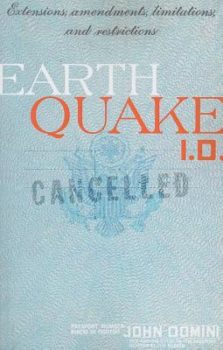 The late Katherine Dunn worked tirelessly for decades for progressive causes in Portland, Oregon. She became rich and famous with the novel Geek Love, but both beforehand and afterwards she could be found on the barricades. Concerning the success of her breakthrough novel, she told me: “The whole idea of making money off writing is nutty. It’s like getting paid for masturbating.” Myself, I wouldn’t go that far, but I can’t ignore how making art is having fun. Even the cold-eyed George Grosz, I’d argue, was indulging playful impulses. Such impulses appeal to everyone, naturally—including those on the margins. They too seek the release of the creative, and every once in a thousand times, they catch the eye of the Bossman. The arts, that is, affords a rare platform for the outsider, and this in turns replenishes the larger culture, especially here in the US. I mean, otherwise, what’ve you got, William Dean Howells? Just now, in fact, aren’t African Americans driving the arts? Kevin Young, Kara Walker, more? Yet this rare upward mobility, via the arts, creates ironies, just as you say—though the people who live with that irony would call it conflict. They suffer an array of hurts for which the therapists are still devising names: Imposter Syndrome, Survivor Guilt… The Color Inside charts such a struggle, a quest for the authentic amid the superficial glitter of European “success.”
The late Katherine Dunn worked tirelessly for decades for progressive causes in Portland, Oregon. She became rich and famous with the novel Geek Love, but both beforehand and afterwards she could be found on the barricades. Concerning the success of her breakthrough novel, she told me: “The whole idea of making money off writing is nutty. It’s like getting paid for masturbating.” Myself, I wouldn’t go that far, but I can’t ignore how making art is having fun. Even the cold-eyed George Grosz, I’d argue, was indulging playful impulses. Such impulses appeal to everyone, naturally—including those on the margins. They too seek the release of the creative, and every once in a thousand times, they catch the eye of the Bossman. The arts, that is, affords a rare platform for the outsider, and this in turns replenishes the larger culture, especially here in the US. I mean, otherwise, what’ve you got, William Dean Howells? Just now, in fact, aren’t African Americans driving the arts? Kevin Young, Kara Walker, more? Yet this rare upward mobility, via the arts, creates ironies, just as you say—though the people who live with that irony would call it conflict. They suffer an array of hurts for which the therapists are still devising names: Imposter Syndrome, Survivor Guilt… The Color Inside charts such a struggle, a quest for the authentic amid the superficial glitter of European “success.”
This book is the final book in a trilogy set in Naples. How do approach writing about place in narrative? Does it function as its own character?
I was just talking about one person’s troubles, and each of these Naples novels has such a central player, a man or woman set apart in some way. But the project is also driven by the opposite sort of vision, that of the urban moil, as it shifts under successive waves of new arrivals. I consider Naples a trimillennial exercise in city life, one that everywhere presents the same intriguing paradox. Contemporary pressures keep mounting, all across the oldest downtown in the West. That last may sound like too much, but the central thoroughfares have been in continuous use since about 700 BCE. I could heap on more research, in Italian as well as English, but I don’t want to overlook how personal this was, the whole tripartite shebang. Naples for me was a place of renewal. It stitched me back together when I lay in rags and tatters, as the ‘90s turned to the aughts. I traveled on the cheap and had my little adventures, but the last thing I’d want is a book like Eat Pray Love, in which the many, many strata of this metropolis become a mere backdrop for a comfy white boy. Myself, I preferred the strata, and the teeming; to see myself as a mere smidge amid all that gifted me with fresh purpose.
Let’s talk about the craft of writing for a bit. You’ve written four novels and three books of short fiction. Can you talk about the revision process? How do you go about revising a novel and how many revisions did The Color Inside a Melon experience before its final iteration? As you’ve become a more experienced writer, have you found your work has needed fewer revisions?
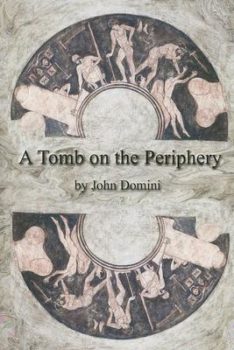 The last question’s the easiest: no way. If anything, getting older has made me more of a quibbler. It’s made me question, endlessly, the current technology. I’m one of those who switched from manuscript and typewriter to “word processing,” in all its ever-more-automatic forms, and I do wonder sometimes about what the change cost. Working in MS, at best there’s a muscular compulsion, the current down from brain to arm to sentence and period. The flow carries along all the 19th Century greats, even a writer like Conrad, working in his second or third language, his grammatical constructions ungainly but forceful. Myself, I hope I haven’t lost that primal drive, and I still do a lot of early drafting by hand. Nevertheless, I’ve gone on to more advanced technology, there’s no beating the speed and convenience, and so actually I find it impossible to answer your other questions. I mean, on computer I go back over drafts constantly, so it’s hard to separate one from the other. On The Color Inside, maybe six drafts, total, before the final went to Dzanc. Or, counting another way, maybe a dozen? Then the great Dzanc editor, Michelle Dotter got to work. Assiduous and caring, her work was so wonderful that I was glad to deliver yet another draft under her guidance. Or was it two more?
The last question’s the easiest: no way. If anything, getting older has made me more of a quibbler. It’s made me question, endlessly, the current technology. I’m one of those who switched from manuscript and typewriter to “word processing,” in all its ever-more-automatic forms, and I do wonder sometimes about what the change cost. Working in MS, at best there’s a muscular compulsion, the current down from brain to arm to sentence and period. The flow carries along all the 19th Century greats, even a writer like Conrad, working in his second or third language, his grammatical constructions ungainly but forceful. Myself, I hope I haven’t lost that primal drive, and I still do a lot of early drafting by hand. Nevertheless, I’ve gone on to more advanced technology, there’s no beating the speed and convenience, and so actually I find it impossible to answer your other questions. I mean, on computer I go back over drafts constantly, so it’s hard to separate one from the other. On The Color Inside, maybe six drafts, total, before the final went to Dzanc. Or, counting another way, maybe a dozen? Then the great Dzanc editor, Michelle Dotter got to work. Assiduous and caring, her work was so wonderful that I was glad to deliver yet another draft under her guidance. Or was it two more?
Another answer would be that I’m one of those writers who doesn’t much care to mull over craft. Some folks can’t get enough of that, even Tweeting their insights and wrangling over them; myself, I leave those threads alone, and I can’t help thinking, hey, Mary McCarthy put it better back about 1961. Of course, that’s unfair—whenever anyone hits on a core point of craft, it can offer fresh perspective—and I still advise apprentice writers all the time. But you’ll never see John Domini’s Guide to Writing Fiction, not if I’m publishing till Doomsday.
There’s an element of mysticism in this work. What writers have been your biggest influencers when it comes to writing elements of mysticism.
As for influence, I believe I nicked this novel’s magic business from an episode of the old Twilight Zone. I do think that’s the first I encountered it, yes, though visions such as Risto experiences have a long history. You’ll find the same in the Thousand Nights and A Night, for instance. That’s also my primary point about making fiction that uses mystical elements, in a time when most people give such stuff no credence—though, God knows, Trump supporters tend to hold far stranger beliefs. But never mind; as a fiction writer I take the longer view, in which the occult is simply another dramatic option. The Color Inside, I repeat, works by and large as psychological realism, but that doesn’t mean I can’t clear a space for the unreal. I have to be specific about the effects, of course. That’s a point of craft, Garcia Marquez and his advice about the elephants flying in the backyard: readers won’t believe in elephants, generally, but they’ll believe in a specific number (in GGM’s case, 364). Besides that, all three of my Naples books have some such X Factor, and surely that’s appropriate to a setting in which every former baronial palace has its ghost story. Back before those palaces went up, too, the evening’s entertainment might be Ovid’s Metamorphoses, themselves finding new spells for the abracadabra of the Greeks. Fairies and ogres trundle through all my books (if only a wee bit in the Oregon stories, Highway Trade); in the Stratocaster of my imagination, that particular pickup was built in.
Do you always have an idea of your next project by the time you finish one? Or do you need to let the first project go for a while to regain space in your head for a new project?
 Well, I certainly need time! Even the brief MOVIEOLA!, the way I figure it, took about ten years in the composition. As for my next fiction, I’m still cooking that up, making notes by hand in one area while, in another, composing a quasi-final draft on computer. It’s all part of being a writer who keeps a number of balls in the air, and this includes non-fiction. I keep accepting review assignments; they provide inspiration and they keep the compositional engine well-tuned, and I imagine I’ll drop dead just after hitting “send” on yet another thousand-word appraisal. Besides that, I can say that, yes, I want each fiction to push back against the previous, in some way. The Color Inside portrays Naples in different ways, substantially different, from Earthquake I.D. or A Tomb on the Periphery. It feels good to finish the set, I guess—I’m proud of myself but now as I look over the bookshelf, I see a batch of squabbling brothers.
Well, I certainly need time! Even the brief MOVIEOLA!, the way I figure it, took about ten years in the composition. As for my next fiction, I’m still cooking that up, making notes by hand in one area while, in another, composing a quasi-final draft on computer. It’s all part of being a writer who keeps a number of balls in the air, and this includes non-fiction. I keep accepting review assignments; they provide inspiration and they keep the compositional engine well-tuned, and I imagine I’ll drop dead just after hitting “send” on yet another thousand-word appraisal. Besides that, I can say that, yes, I want each fiction to push back against the previous, in some way. The Color Inside portrays Naples in different ways, substantially different, from Earthquake I.D. or A Tomb on the Periphery. It feels good to finish the set, I guess—I’m proud of myself but now as I look over the bookshelf, I see a batch of squabbling brothers.
Writing is a solitary endeavor, but at the same time, developing a writing community is important for improving your work, mutual encouragement and motivation, and networking. Can you talk a little about how you’ve developed your writing community and do you have any advice for writers struggling to find community?
Now, this seems a terrific consideration to end on, one that has less to do with me and my work. Community matters, no question, even for that rare peacock of a talent, Flannery O’Connor; after all, the woman attended the Iowa Workshops, before retreating to Milledgeville. On the other hand, O’Connor would be the first to insist on a selective community, just a few folks you trust, even when you disagree. Outside of a beer ad, nobody’s ever surrounded by happy friends all the time. The readers and thinkers you care about aren’t always going to gush over your work. In fact, they may not always be writers. The change in sensibility offered by a musician, say, or a cabinet-maker with brains—this can be awfully illuminating. History offers plenty of cases of writers who benefited from companionship outside their own ranks. As for the challenge of achieving such companionship, forging a community, the only solution seems to be the same as the one for getting published, namely, just keep trying. Just keep seeking and asking, the way you do when trying to find a sympathetic editor. Naturally, you try to keep being a pest, and to gather the necessary advance information (in my case, that’s often entailed reviewing more books). Others struggling to create have the same needs, don’t they? And the only worthwhile circle of support is one that’s mutual, isn’t it? The ideal to work towards, based in respect for what the others are trying to do, is a kind of shared language. In shorthand, with just a couple of well-chosen questions, the right reader can help steer a Titanic of a novel away from the iceberg.

